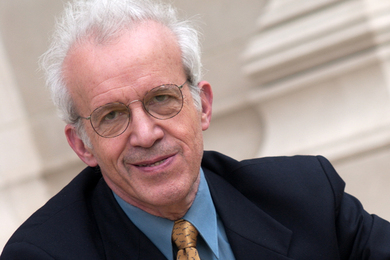CAMBRIDGE, Mass. -- A Massachusetts of Technology researcher has helped yeast live longer by putting it on a strict diet.
His research team reports in the Sept. 22 issue of Science that an enzyme co-factor and a gene join forces with the reduction in calories to slow down aging.
The recent work of MIT biology professor Leonard Guarente may help explain the long-known fact that restricting calories to 70 percent of normal levels helps mice and other creatures live longer, healthier lives.
The billion-dollar question is: What is the mechanism through which this works?
Guarente, who studies the silenced information regulator (SIR2) gene and its apparent ability to slow the aging process, showed that in yeast, calorie restriction leads to an increase in the activity of the Sir2 protein (made by the SIR2 gene) required for genomic silencing. If the SIR2 gene is deleted or the co-factor levels in cells are depressed, the benefits of calorie restriction on longevity are not realized.
In yeast, age is measured by the number of times a mother cell divides to produce daughter cells. An average yeast cell divides 20 times before it dies. In the current study, yeast cells that received one quarter the amount of glucose they normally ingest lived 30-40 percent longer than usual.
"This is yeast, and we all want to know about humans," Guarente said. "But it is certainly conceivable that this is a conserved mechanism" -- meaning it works essentially the same way in all organisms that carry corresponding SIR2 genes. SIR2 gene homologs have been found in a range of organisms from bacteria to humans.
Guarente is convinced that molecular tinkering can affect the aging process in all organisms. His latest research brings closer to reality the ability to "tweak" cells on a molecular level to significantly maintain their youth.
"A simple shift in cellular metabolism may favor longevity," he said.
UNRULY CHROMOSOMES AND AGING
Aging -- and ultimately death -- in yeast cells seems to be caused by genetic material that gets into trouble.
Long sections of our genome are normally silent, or turned off. As cells age, genes that had been turned off sometimes get turned on. This can create inappropriate gene expression, causing problems that almost always lead to cell death.
For instance, Guarente found that in older yeast cells, a circular piece of the cell's genetic material, in the process of recombining to form new proteins, sometimes pinches off from a chromosome. These superfluous coils accumulate in the cell, causing it to enlarge and eventually die.
By silencing sections of the genome, the Sir2 protein seems to reduce this phenomenon. Like a strict teacher watching over unruly children, Sir2 keeps the genetic material quiet and in place. The resulting closed, inaccessible, tightly packed structure doesn't invite interactions and doesn't get into as much trouble as its more loosely arranged counterparts.
"We have shown that calorie restriction extends life-span by reducing rDNA recombination and rDNA circles. This effect on recombination is likely due to increased silencing by Sir2..." write authors Guarente, postdoctoral fellow Su-Ju Lin and Pierre-Antoine Defossez of the MIT Department of Biology.
A BOOST FOR Sir2
There are certain enzyme co-factors that are important in the process through which cells metabolize food. One of them is nicotinamide adenine dinucleotide (NAD), a ubiquitous molecule that plays an important role in metabolism.
NAD is typically used by enzymes as an oxidizing agent that traps energy-rich electrons obtained when glucose is broken down and helps convert the energy into a form the cell can use. The role of NAD as an activator of Sir2 is different and apparently unique.
When food intake goes down, NAD is less occupied in breaking down glucose and thus becomes more available to Sir2, resulting in increased gene silencing and extended life span.
"You might think you could activate Sir2 by giving an animal at lot of NAD, but it is too big a molecule to get into cells. If you could design a drug that had the same effect on Sir2 as NAD, you might think you could confer robust health and perhaps greater longevity," Guarente said.
This work is supported by the National Institutes of Health, the Ellison Medical Foundation, the Seaver Institute, the Howard and Linda Stern Fund, a National Research Service Award and a Merck/MIT postdoctoral fellowship.





